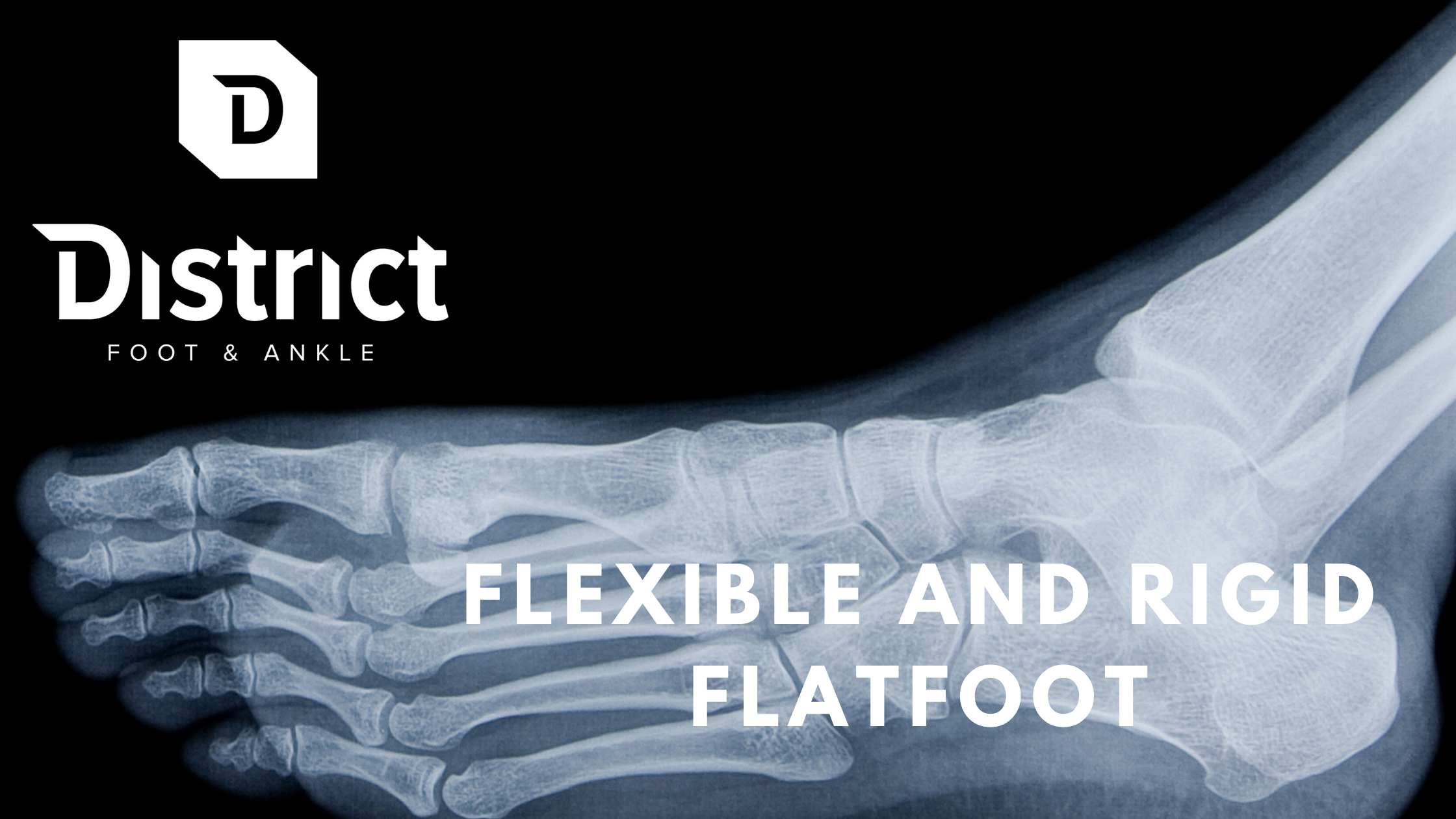Flatfoot is a condition that affects the arches of the feet. There are generally two types of flatfoot: flexible and rigid. In this blog post, we will discuss the difference between these two types of flatfoot. Rigid flatfoot can be the result of arthritis, muscle spasm, or abnormal connections of bones across joints. Let’s talk about some of these differences in more detail.
What is flatfoot, and what are the different types of flatfoot deformity?
A flatfoot deformity is a condition that can occur in one or both feet and affects the shape of the foot. There are two types of flatfoot: flexible and rigid.
Flexible flatfoot is the most common type of flatfoot and usually occurs in children. It is caused by an overstretching of the ligaments that support the arch of the foot. This can cause the arch to collapse, resulting in a flattening of the foot. Flexible flatfoot usually does not cause any pain or other symptoms, and often improves on its own as the child grows older.
A flexible flatfoot can develop later on in life and is termed progressive collapsing flatfoot deformity, and was previously referred to as adult-acquired flatfoot deformity. Usually, this will develop in midlife and associated risk factors would include obesity and tightness in the Achilles tendon. Usually, the deformity will begin as being flexible but as it progresses, with joints being out of alignment, it can become more rigid as arthritis sets in. The severity and stage of flatfoot are what determine the most appropriate treatment for that patient regardless of conservative versus surgical approach.
Earlier stages of flexible progressive flatfoot deformity respond well to activity modification, icing, physical therapy, and orthotic management. As the deformity progresses, it does become more difficult to treat from a conservative standpoint. Different types of orthotics or braces can be used with high success. If the patient does not respond to these conservative treatment options, a surgical procedure could be considered to correct the underlying deformity.
Rigid flatfoot, on the other hand, is less common and can have a few causes. In the pediatric population, this can be caused by an abnormal connection between one bone to another either across the joint or not across the joint. These are referred to as tarsal coalitions or tarsal bars. A common tarsal coalition would be between the talus bone, which is the foot bone in the ankle joint, and the bone the right below called the calcaneus, the heel bone. Because there is a bony bridge that exists between the two, the flexibility within the joint is reduced and the joint cannot adapt to different surfaces through walking, running, and other activities. On occasion, a coalition in the pediatric population can present with even more rigidity because an outer muscle group called the peroneal muscles can be contracted. This is known as peroneal spastic flatfoot deformity. This is one of the telltale signs that a coalition is probably present and requires more diagnostic work-up and investigation by the doctor.
What are the symptoms of flexible flatfoot versus rigid flatfoot?
Flexible flatfoot is often asymptomatic, meaning that it does not cause any pain or other symptoms. However, rigid flatfoot can lead to pain and disability. The most common symptom of rigid flatfoot is pain in the foot and ankle, which can worsen with activity. Other symptoms may include swelling, difficulty walking, and problems wearing shoes.
How is flexible flatfoot treated, and how can you prevent it from progressing to a more serious condition?
Treatment for flexible flatfoot usually begins with conservative measures, such as wearing supportive shoes, arch supports, or orthotics. If these measures don’t relieve the pain or improve function, your doctor may recommend physical therapy to stretch and strengthen the involved muscles and tendons. In some cases, surgery may be necessary to correct a deformity or release tight structures.
You can help prevent flexible flatfoot by maintaining a healthy weight, wearing supportive shoes, and avoiding activities that put undue stress on your feet. If you have diabetes or another condition that causes poor blood flow to your feet, be sure to follow your doctor’s recommendations for care. This will help prevent problems with flexible flatfoot from progressing to a more serious condition.
What is the treatment for rigid flatfoot, and what are the potential complications associated with this type of deformity?
The treatment for rigid flatfoot is typically surgery. The goal of surgery is to realign the bones in the foot so that they are in their proper position. This will help to improve the function of the foot and reduce pain. Surgery can be quite successful in treating this condition, but it is important to be aware that there are potential risks and complications associated with any surgical procedure. These risks and complications should be discussed with your surgeon before having any surgery.
How can you prevent both types of flatfoot from developing in your children or yourself?
Unfortunately, as with most deformities in the foot and ankle, flatfoot can be hereditary and if this is the case, is probably unavoidable. Regardless, maintaining a healthy weight minimizes stress on your feet which can help. Finally, strengthen the muscles in your feet and legs with regular exercise. If you have flatfoot or are at risk of developing it, talk to your doctor about what steps you can take to prevent further damage.
In summary
While flexible flatfoot can often be managed with conservative treatments, there are times when surgery may be necessary. If you experience pain in your feet that does not improve with non-surgical treatment or if the condition significantly limits your activities, talk to your doctor about surgical options. Surgery can help correct the alignment of your foot and ankle and relieve pain. Following a course of treatment tailored to your specific needs will help you manage this common foot problem and keep you on your feet.

